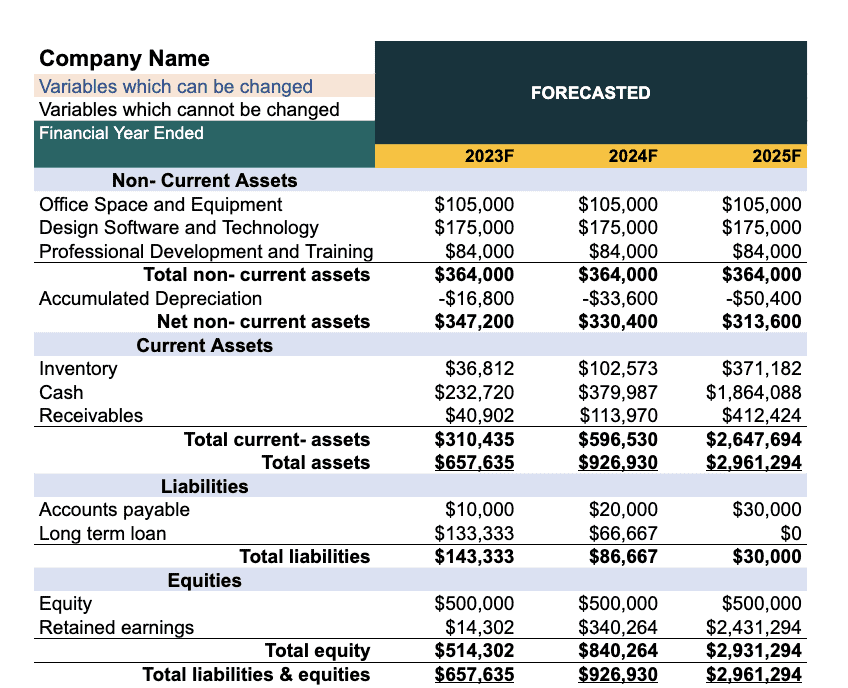Written by Elma Steven | Updated on April, 2024

In order to write a Architecture Firm Business Plan you need to start with executive summary. In order to write an executive summary for a Business Plan you need to mention- what your business is about and what you’ll sell. Explain how you’ll get people to buy it. The executive summary should be written at the end. Then you should write a Business Description mentioning goals, objectives, mission and vision. Some of the major sections or components of a Plan involves Fund Usage Plan, Marketing Plan, Industry Analysis, Organizational Overview, Operational Overview and Financials.
This article will provide you a step by step process to write your Business Plan. Get a free Business Plan at the end!
Executive Summary
Executive Summary of a yogurt business plan can be divided into 5 sections:
Overview
In the overview of your executive summary for your yogurt business plan explain what your business is all about. Briefly explain- what your business is and what it wants to do. You should also talk about what makes the product stand out in the market. The first paragraph should be interesting and show the reader what you want the business to be. The goal is to get people’s attention and get them interested right away.
Problem
Today’s architectural landscape suffers from repetitive designs and poor integration of sustainability, leading to dissatisfied clients and environmental harm.
Solution
Our firm offers unique and sustainable designs that honor local aesthetics by using advanced technology to deliver tailor-made and environmentally-friendly structures that enrich user experience.
Industry Overview
To write the industry overview in the executive summary of your Plan you need to start by briefly defining the industry and its main characteristics. Present the current state of the industry, including its size, growth rate and major trends. Make sure to identify the dominant players and the level of competition. In addition, discuss the anticipated future of the industry such as expected growth and upcoming trends. Always keep the focus on those aspects that directly impact your business and will be relevant to your business model and strategy.
Check out this guide on how to write an executive summary? If you don’t have the time to write on then you can use this custom Executive Summary Writer to save Hrs. of your precious time.
Financial Overview
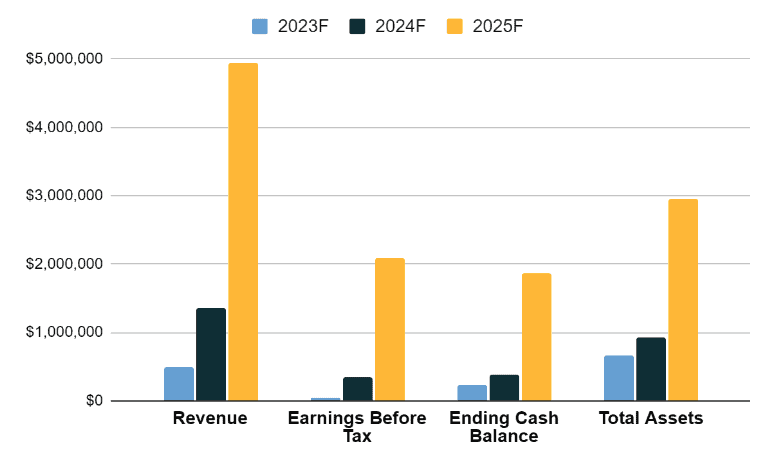
Business Description
Business Name: Sketchbook Gardens
Founder: Jacob Harrison
Management Team:

Legal Structure: LLC
Location: Miami, Florida
Mission
A mission statement is a concise summary that defines the purpose of an organization, outlining its business, its target audience and values.
Vision
A vision statement is a forward-looking declaration of an organization’s aspirations and goals for the future. A vision statement concentrates on the future and what the organization aims to achieve or become. In comparison to the mission statement which focuses on the present and what the organization does, . It serves as a guiding beacon providing inspiration and setting the direction for strategic planning.
Goals
Break down your goals into specific areas of focus. These can include financial targets, client acquisition, market expansion, project types and other relevant aspects. The goals should be specific and measurable. For example:
- Secure contracts with at least three new major clients within the next six months.
- Complete a flagship project that showcases innovative design and sustainability principles within the next two years.
- Establish a strong online presence and increase brand awareness through targeted digital marketing campaigns resulting in a 20% increase in website traffic and social media engagement.
Services
- Architectural Design: Providing comprehensive design services for residential, commercial, institutional, and industrial projects, including concept development, schematic design, design development, and construction documentation.
- Urban Planning and Master Planning: Developing long-term plans for urban areas or large-scale developments, including land use analysis, transportation planning, and zoning recommendations.
- 3D Visualization and Rendering: Creating photorealistic renderings, virtual tours, and 3D visualizations to help clients visualize the design concept before construction.
It is better to present revenue sources through a nice chart:
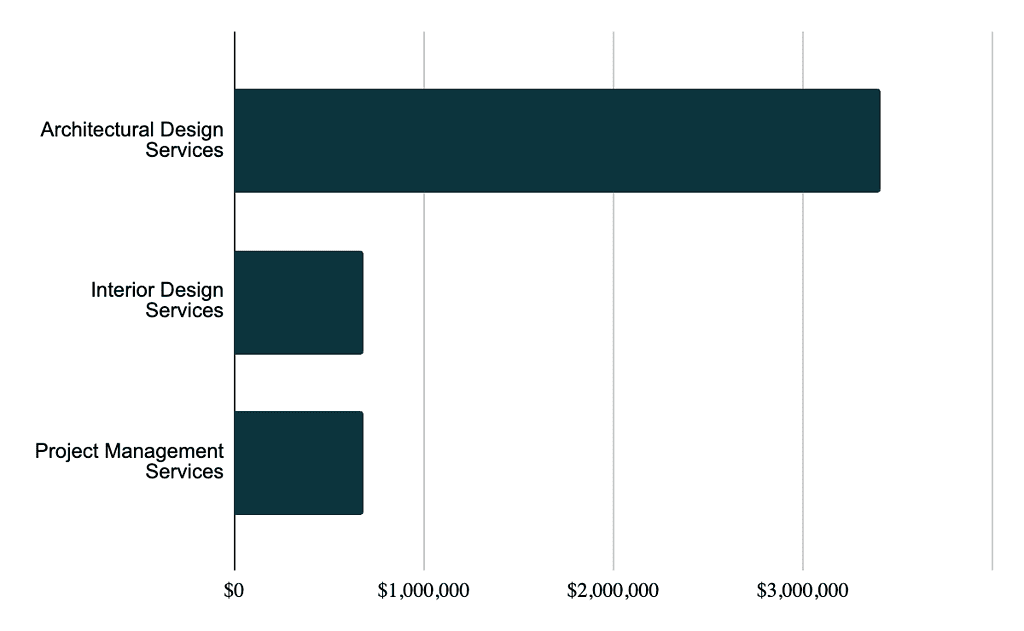
Ask/ Fund Request
You need to make a list of items that you wish to invest on for either starting the business or for expansion. Then you need to allocate CapEx budget for each of the items and present it using a chart like this:
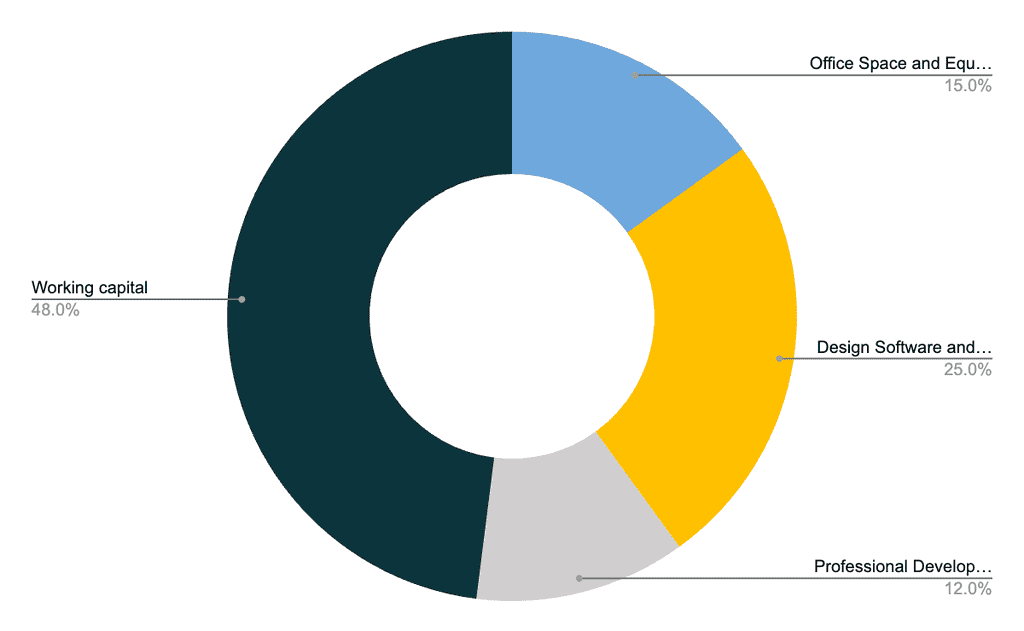
Business Model Canvas
Tips on Business Model Canvas
The Business Model Canvas is a high-level overview of the business model. It can also be considered as the business model map in the overall plan. The important partners, key activities, value proposition and cost & revenue sections are only some of the nine vital components. A company idea’s complexities may be mapped out, analyzed and communicated with the use of the canvas. It shows the whole picture of a company’s value creation, delivery and capture processes. It helps new business owners hone their ideas, encourage creative thinking and make sound strategic decisions. It’s a helpful resource for coming up with ideas, organizing plans and presenting business models to key players. Check out the 100 samples of business model canvas.
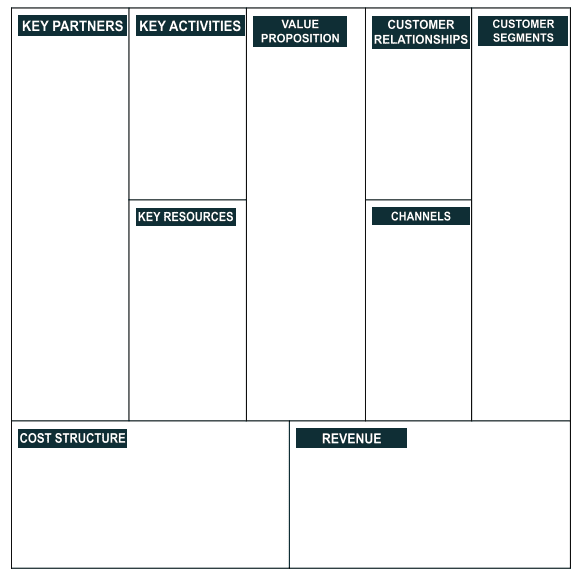
SWOT
Tips on SWOT Analysis
It offers a clear lens into a company’s strengths, weaknesses, opportunities and threats. This self-awareness enables effective resource allocation and strategic positioning against competitors. Businesses can mitigate risks, make informed decisions and set realistic goals. In addition, presenting a SWOT analysis in a business plan communicates to stakeholders that the company possesses a deep understanding of its market environment. In essence, SWOT ensures a business’s strategy is grounded in reality enhancing its chances of success. Check out the 100 SWOT Samples
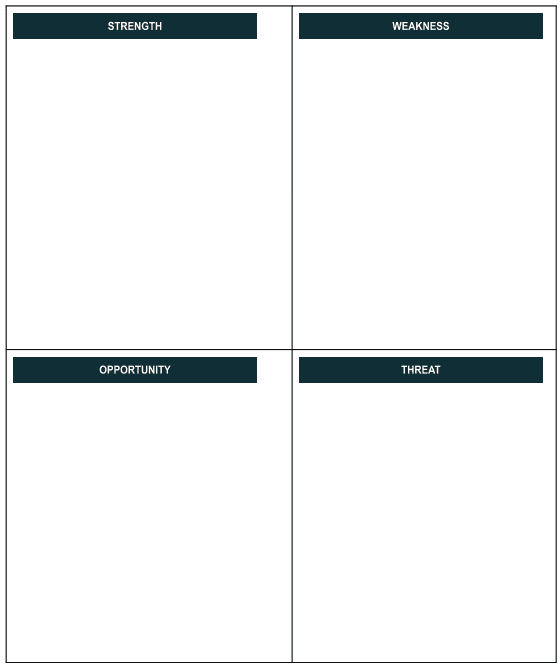
Organizational Overview
Founder

Start by providing a brief introduction of each founder. Emphasize their experience, competence and noteworthy accomplishments.
Describe the educational experiences and career experiences that are relevant to each of the founders. Highlight on their prior jobs in the architectural business highlighting any important projects they have worked on. Also, explain the distinctive capabilities, areas of knowledge and points of view that each founder of the architectural company brings to the table. Bring attention to the ways in which their distinct advantages may reinforce one another and contribute to the overall capabilities of the company.
Include specifics of the tasks and roles that each of the company’s founders play inside the organization. Also, explain how their respective areas of expertise are aligned with the objectives of the company. In addition, how they work together to guarantee the smooth running and further expansion of the company.
It is important to emphasize the founders’ collective vision and goal for the company. It is important to highlight their dedication to providing great architectural solutions.
Consider incorporating a short personal biography or narrative for each entrepreneur so that their profiles seem more approachable to readers. This allows readers to connect with the architectural business’s founders on a more personal level and have a better understanding of the founders’ motives for creating the architectural firm.
Industry Analysis
This is a very important part as it highlights existing conditions of the industry. This will help you identify gaps in the market which can be exploited to get more efficient results.
Industry Overview
This is similar but more extended version if the industry overview in Executive Summary. A reader should get a summary of all the important points of the industry analysis included important market players, overall market size, what is the biggest industry problem, etc. Also, try to mention important stats of the industry and don’t forger to provide references.
Competitive Landscape
Who are your key competitors? You can mention competitors in terms of location, products or some other attributes. Consider each competitor’s brand image. Are they positioning themselves as luxury, eco-friendly, youthful, classic, etc.? Look at their advertising, website, and social media presence to understand their brand voice and the demographic they’re targeting. Try to find out about their marketing strategy and overall strength in terms of No. of site visitors, No. of social media followers, etc. Investigate how your competitors promote and sell their services. Do they have a strong online presence? Do they collaborate with celebrities or influencers? Do they utilize a direct-to-consumer model or rely on department stores? Understanding their strategies can help identify any gaps your business could fill.
Examine each competitor’s product range in depth. Look at the varieties of services they offer. Assess their packaging, sizes, price points, and any unique selling points. Pay attention to customer reviews and ratings to understand the perceived quality and popularity of your competitors.
Industry Problems & Opportunities
Try to identify major gaps in the market which are not being addressed by existing market players.
Marketing Plan
Marketing plan starts with the promotional budget. You need to figure out which channels should be used and how much should be spent across each channel. Use a graph to present your plan:
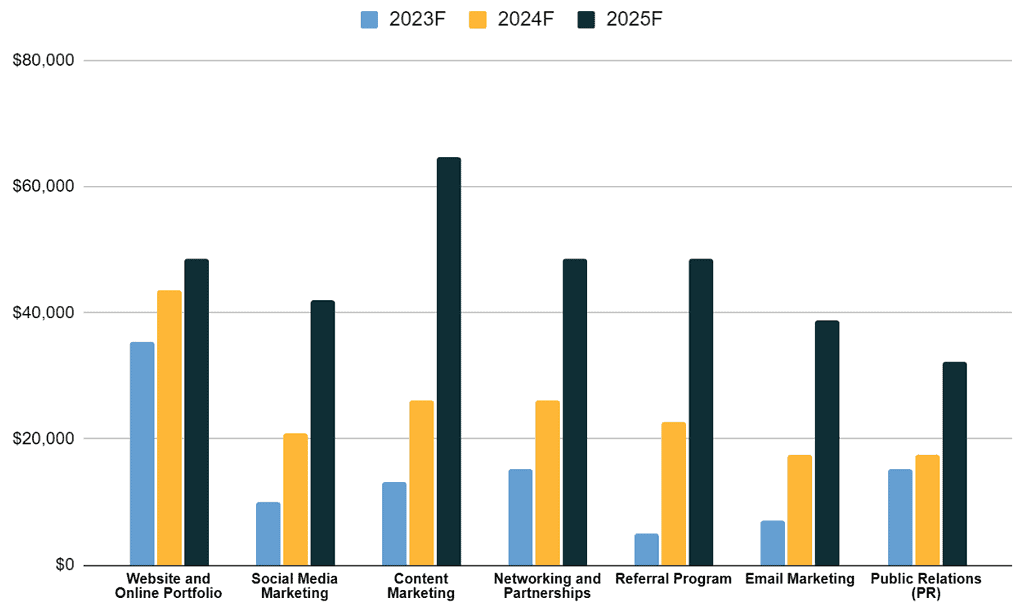
Spending Across Channels

Marketing Objectives
Ensure that your marketing objectives are specific, measurable, achievable, relevant, and time-bound (SMART). This means that each objective should clearly state what you aim to achieve and include a quantifiable metric for measurement.
Identify the key areas where you want to achieve marketing success. This could include areas such as client acquisition, market expansion, brand awareness and client retention. Determine which objectives are most important for your architectural firm at its current stage. Prioritize those objectives and ensure that they are achievable within the resources and capabilities of your firm.
Ensure that your marketing objectives are aligned with the overall goals and vision of your architectural firm. They should support the growth and success of your business and contribute to its long-term sustainability. Outline how you will track and evaluate the progress towards each marketing objective. Identify the key metrics and indicators that you will use to measure success. Consider using tools such as Google Analytics, CRM software and or customer surveys to collect data and monitor progress.
Marketing Channels
When writing about marketing channels in your business plan, provide an overview of the different channels you will utilize to reach your target audience effectively. This includes online channels such as your website, search engine optimization (SEO), social media platforms, online advertising, and email marketing. Offline channels can include networking events, industry conferences, print materials, and public relations. Justify your channel selection based on their potential reach, alignment with your target audience, and budget considerations. Emphasize the importance of maintaining a consistent brand presence and monitor channel performance to make data-driven decisions for optimal results.
Financials
You should start with graphs and charts as it highlights the performance in the Plan.
Earnings
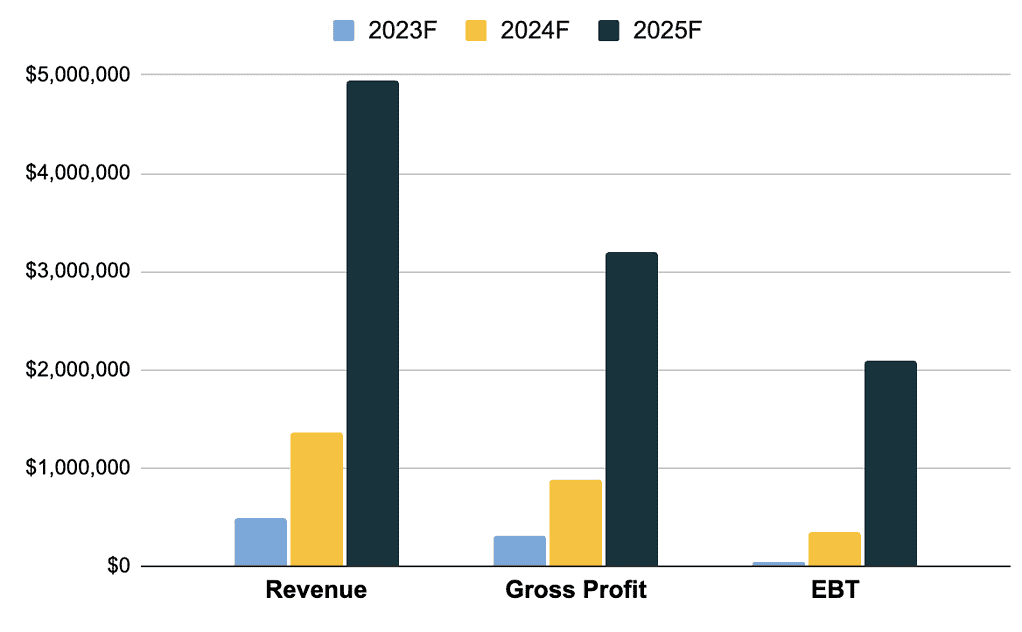
Costs
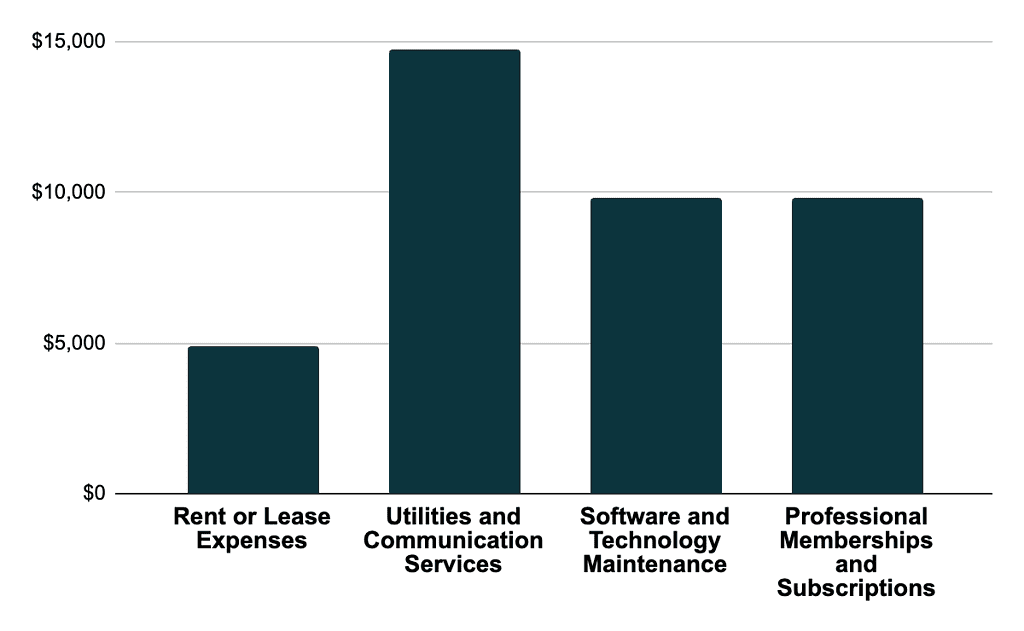
Break- Even Analysis
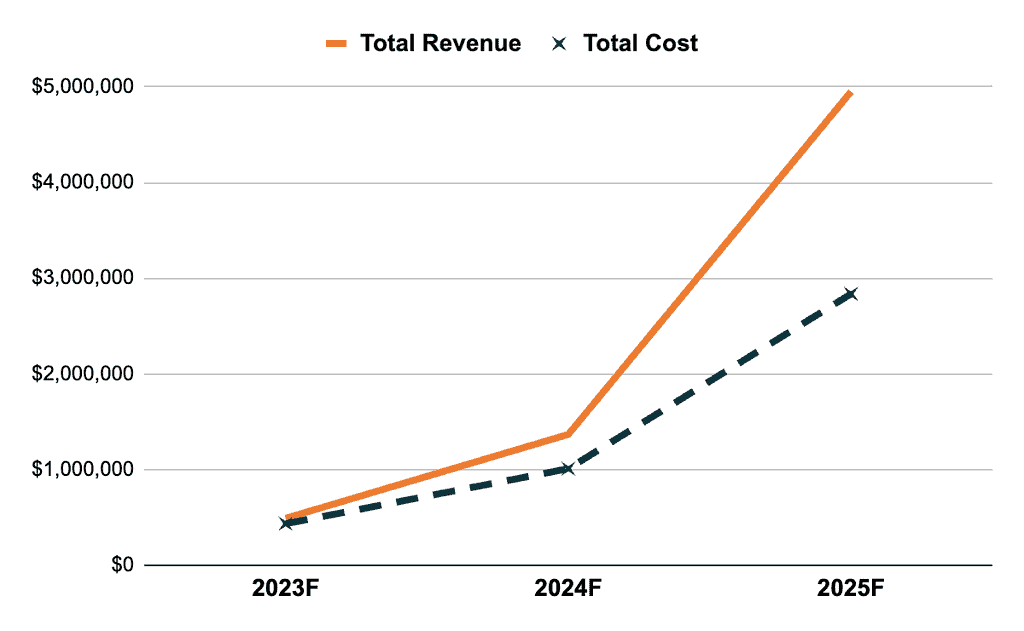
Some of the important charts include:
Income Statement
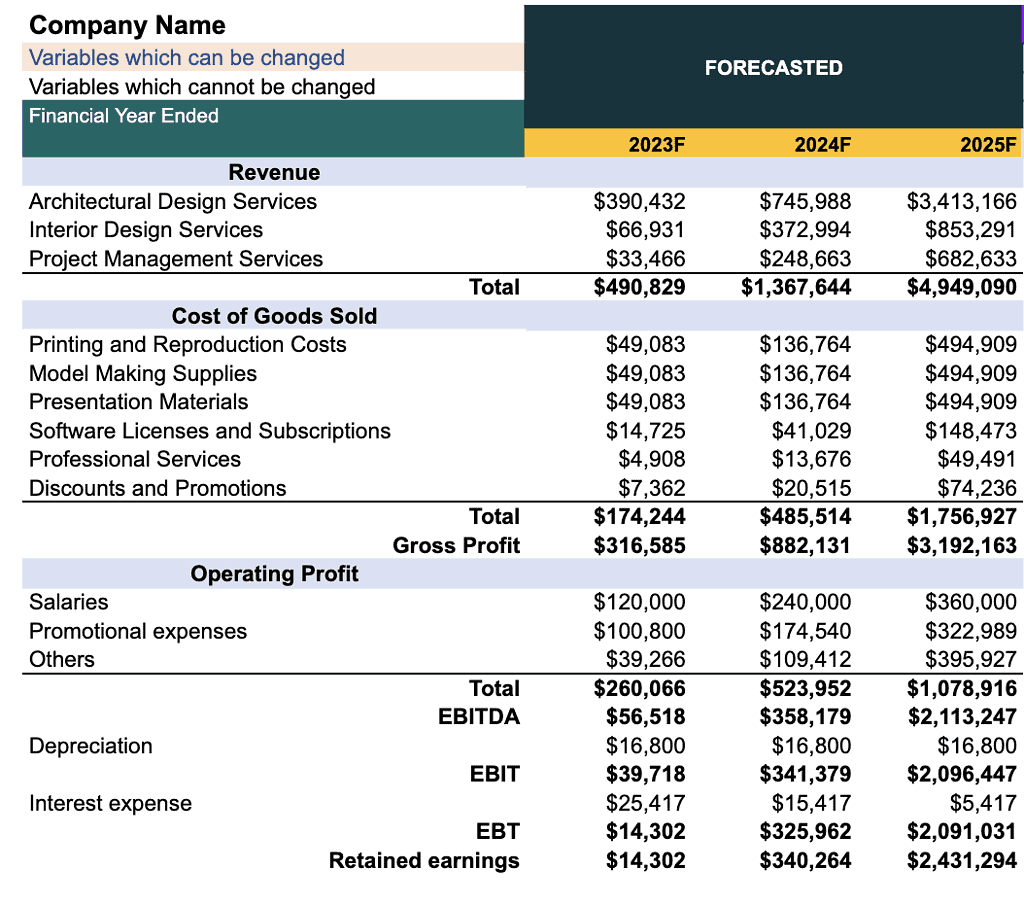
Cash Flow Statement
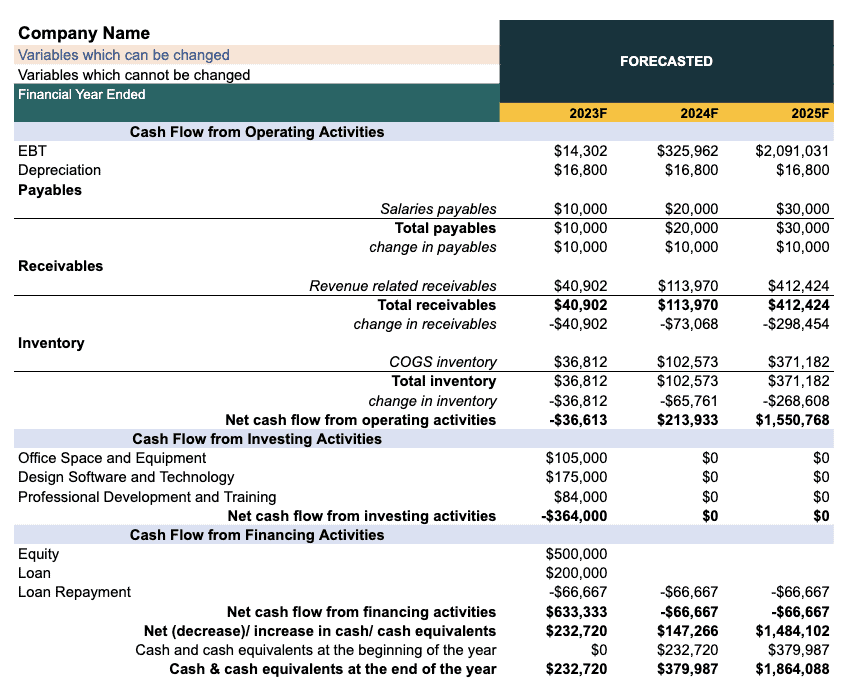
Balance Sheet
